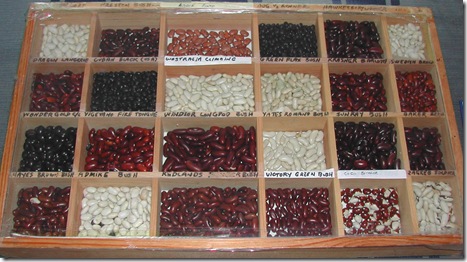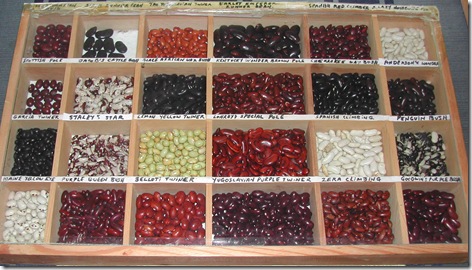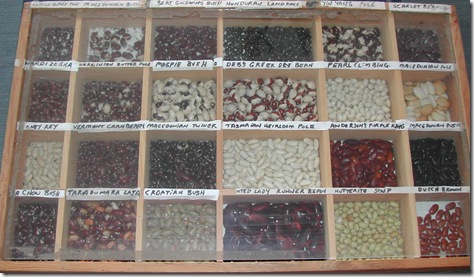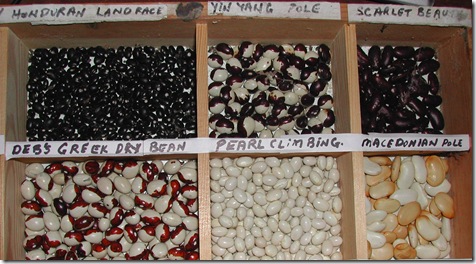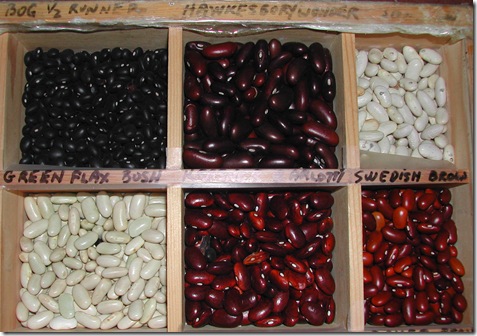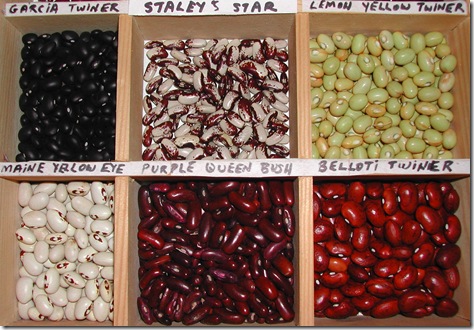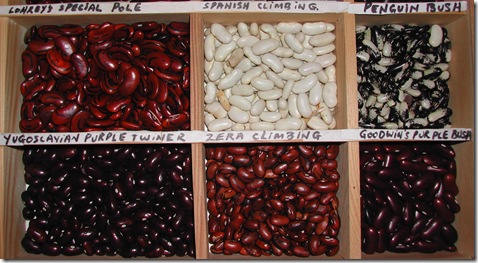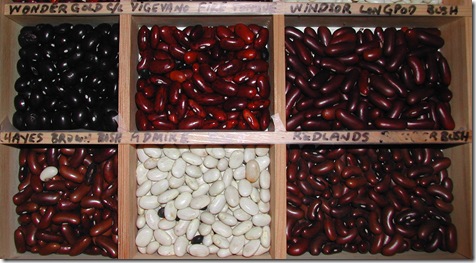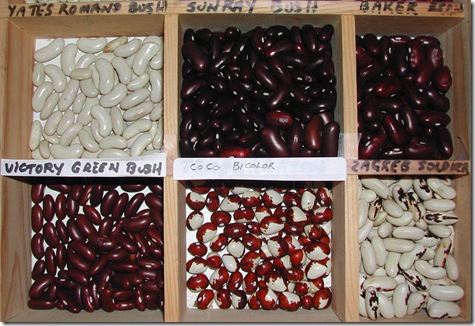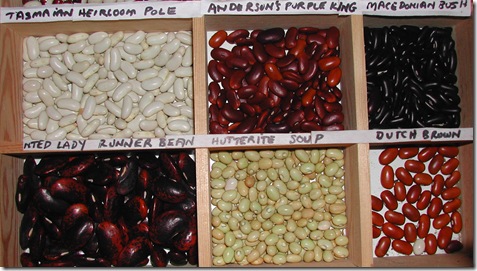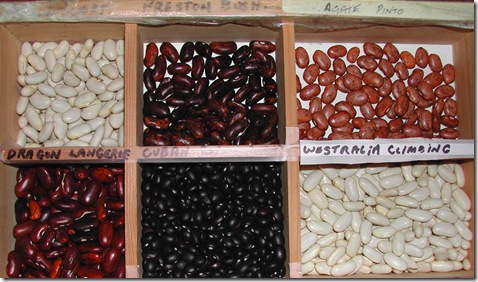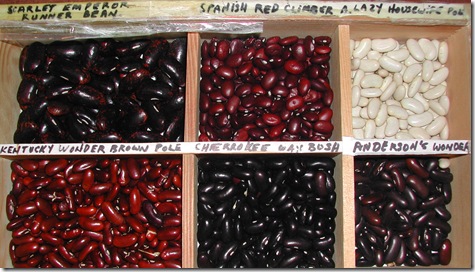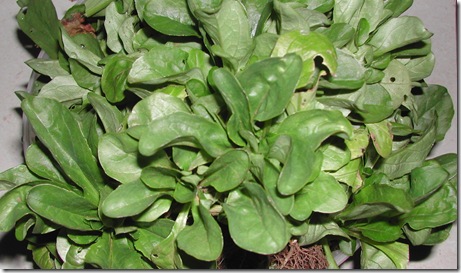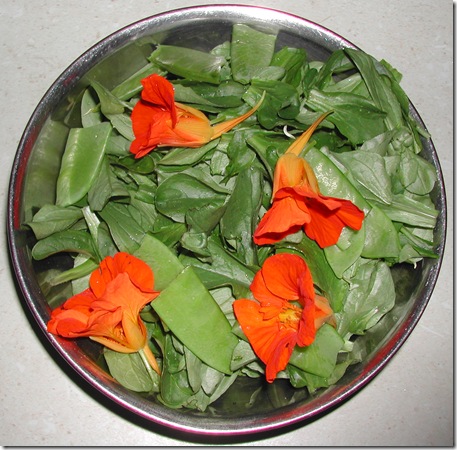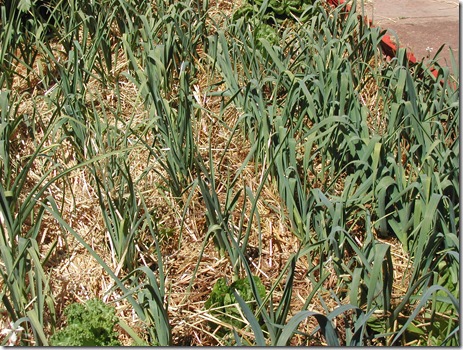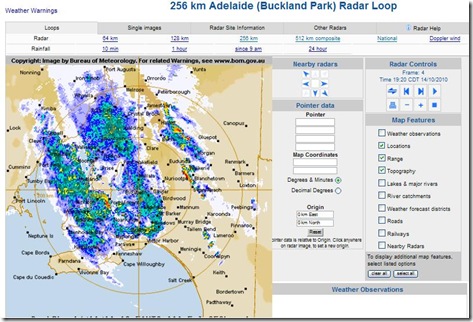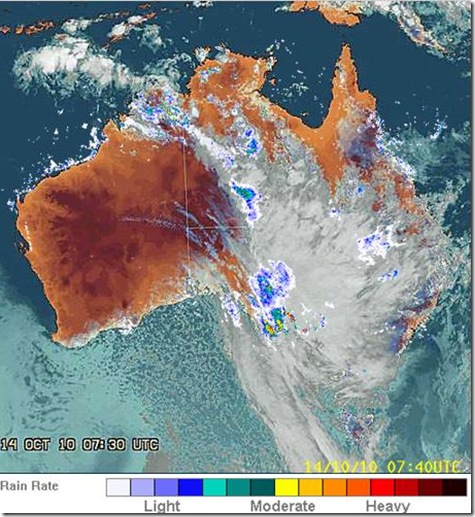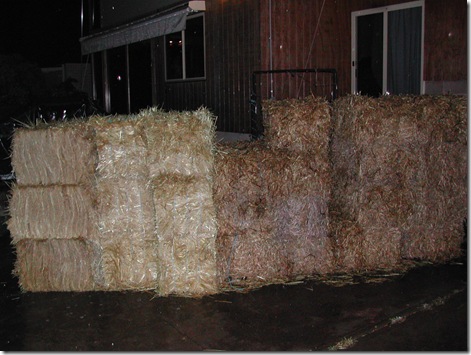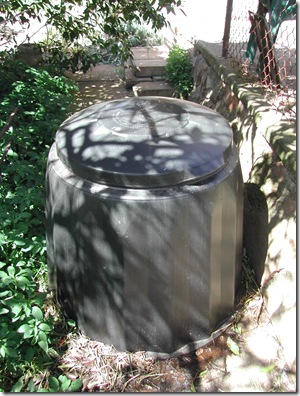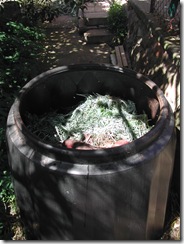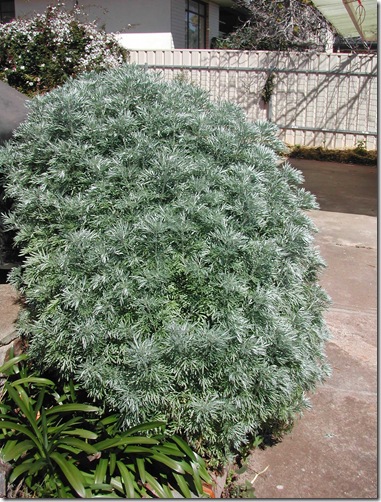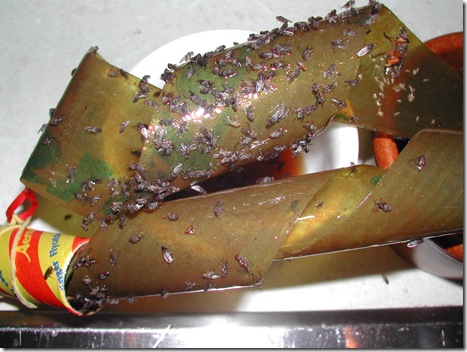Beans (Phaseolus vulgaris) have the most colourful and rewarding of seeds, which probably explains why gardeners have been growing them on now for over 6000 years. Given this length of time since beans were domesticated in the temperate regions of South America (Peru), it is no wonder that hundreds of varieties of beans exist today.
In general, what kitchen gardeners call ‘beans’ are either the French bean, eaten when tender and green, or the dried Kidney beans stored for later use in soups and stews. So this range of beans excludes such ‘beans’ as Broad beans (Vicia fava), Guada beans (Trichosanthes anguina), Lima beans (Phaseolus lunatus [P. limensis]), Runner beans (Phaseolus coccineus), Snake beans (Vigna unguiculata var. sesquipedalis), Soya beans (Glycine max), Winged beans (Psophocarpis tetragonolobus) and Yam beans (Pachyrrhizus erosus).
French beans and Kidney beans are further divided into dwarf (or bush) beans and climbing (or pole) beans. Climbing beans needed richer soil than dwarf beans, but produce over longer periods. Climbing beans are grown on stakes or trellises, whereas dwarf beans are self-standing as a small bush.
My own interest in beans was fired many years ago by Bill Hankin’s collection, shown during a talk Bill gave in Adelaide to home gardeners back in about 2003. Bill’s bean seed collection consists of some 72 bean seeds, which sounds like a lot, but which represents just a fraction of the hundreds of varieties known. Still, it was with great pleasure that I was able to look over this collection at close quarters for myself, as Bill lent me the lot to show off in public at our local seed-savers display in the Adelaide Botanic Gardens today.
Some of the beans in Bill’s collection have been attacked by bean weevils, which lay their eggs under the skin of the bean while they are still in the pod, and which hatch out in the stored beans and bore small holes through the beans, destroying their fertility. 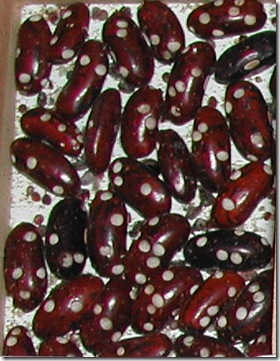 (The solution to weevils is to seal the beans in an jam jar and place them in the freezer for 48 hours to kill the eggs. The jar has to be airtight to prevent the seeds dehydrating in the freezer, which will kill the bean).
(The solution to weevils is to seal the beans in an jam jar and place them in the freezer for 48 hours to kill the eggs. The jar has to be airtight to prevent the seeds dehydrating in the freezer, which will kill the bean).
All of the beans in the collection have faded somewhat with time and are likely no longer viable, as bean seeds cannot usually be stored beyond three years, and those in this collection are over eight years old. Nevertheless, here they are (below) in close up, to help identify the shape and colour of various beans collected by Bill from heritage growers and commercial seeds companies over many years and grown on before the thrill of it all wore off, and Bill just put the remainder into this collection.
Top from left: Rattlesnake pole bean, Macedonian butter bean, Bert Goodwin’s bush bean.
Bottom from left: Nardi Zebra bean, Ukrainian butter pole bean, Magpie bush bean.
Top from left: Honduran Landrace bean, Yin Yang pole bean, Scarlet Beauty (runner) bean
Bottom from left: Deb’s Greek dry bean, Pearl climbing bean, Macedonian pole bean
Top from left: Honey Key bean, Vermont Cranberry bean, Macedonian Twiner bean
Bottom from left: Ah Chow bean, Tarahumara Laja bean, Croatian bush bean
Top from left: BOG (Brisbane Organic Growers) Half Runner bean, Hawkesbury Wonder, Sun… (illegible)
Bottom from left: Green Flax bush bean, Krasner Barlotti bean, Swedish Brown bean
Top from left: Garcia Twiner bean, Staley’s Star bean (Bill Hankin believes that this bean is extinct now), Lemon Yellow Twiner bean
Bottom from left: Maine Yellow Eye bean, Purple Queen bush bean, Bellotti Twiner bean
Top from left: Lohrey’s Special pole bean, Spanish climbing bean, Penguin bush bean
Bottom from left: Yugoslavian Purple Twiner bean, Zera climbing bean, Goodwin’s Purple bush bean
Top from left: Wondergold climbing bean, Yigevano Fire Tongue bean, Windsor Longpod bean
Bottom from left: Hayes Brown bush bean, Admire bush bean, Redlands Pioneer bush bean
Top from left: Yates Romano bush bean, Sunray bush bean, Baker bean
Bottom from left: Victory Green bush bean, Coco Bicolor bean, Zagreb Soldier bean
Top from left: Low’s Champion bush bean, Black Runner bean, Tan Yugoslavian Twiner bean
Bottom from left: Scottish pole bean, Jacob’s Cattle bush bean, Black African Wax bush bean
Top from left: Tasmanian Heirloom pole bean, Anderson’s Purple King bean, Macedonian bush bean
Bottom from left: Painted Lady Runner bean, Hutterite Soup bean, Dutch Brown bean
Top from left: (illegible) bean, Preston bush bean, Agate Pinto bean
Bottom from left: Dragon Langerie bean, Cuban Black (USA) bean, Westralia climbing bean
Top from left: Scarlet Emperor runner bean, Spanish Red climber bean, Lazy Housewife pole bean
Bottom from left: Kentucky Wonder Brown pole bean, Cherokee Wax bush bean, Anderson’s Wonder bean

